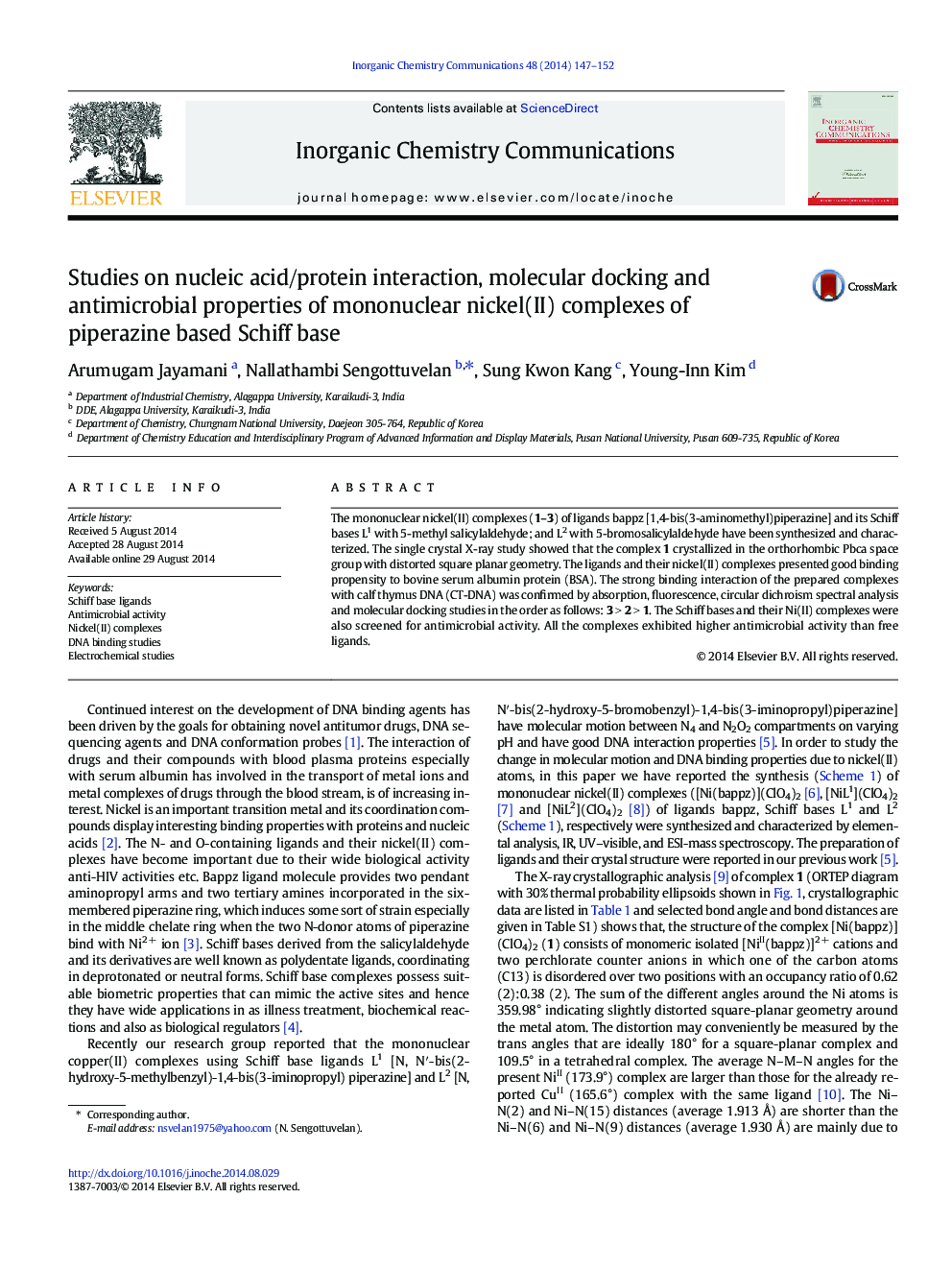| Article ID | Journal | Published Year | Pages | File Type |
|---|---|---|---|---|
| 1303692 | Inorganic Chemistry Communications | 2014 | 6 Pages |
•The mononuclear nickel(II) complexes (1–3) were synthesized and characterized.•The molecular structure of complex 1 was determined by X-ray crystallography.•The position of Ni(II) atom from N4 to N2O2 compartment is achieved by varying pH.•Complexes (1–3) were able to bind to DNA and protein in the order 3 > 2 > 1.•The ligands and their nickel(II) complexes exhibited good antimicrobial activity.
The mononuclear nickel(II) complexes (1–3) of ligands bappz [1,4-bis(3-aminomethyl)piperazine] and its Schiff bases L1 with 5-methyl salicylaldehyde; and L2 with 5-bromosalicylaldehyde have been synthesized and characterized. The single crystal X-ray study showed that the complex 1 crystallized in the orthorhombic Pbca space group with distorted square planar geometry. The ligands and their nickel(II) complexes presented good binding propensity to bovine serum albumin protein (BSA). The strong binding interaction of the prepared complexes with calf thymus DNA (CT-DNA) was confirmed by absorption, fluorescence, circular dichroism spectral analysis and molecular docking studies in the order as follows: 3 > 2 > 1. The Schiff bases and their Ni(II) complexes were also screened for antimicrobial activity. All the complexes exhibited higher antimicrobial activity than free ligands.
Graphical abstractThe molecular structure of complex 1 was determined by X-ray crystallography. The nickel ion in the mononuclear complexes has been translocated between two non-equivalent coordinating compartments of ligand by varying the pH. Complexes (1–3) were able to bind to DNA and protein in the order 3 > 2 > 1. Molecular docking studies validated the intercalative mode of binding interaction.Figure optionsDownload full-size imageDownload as PowerPoint slide
